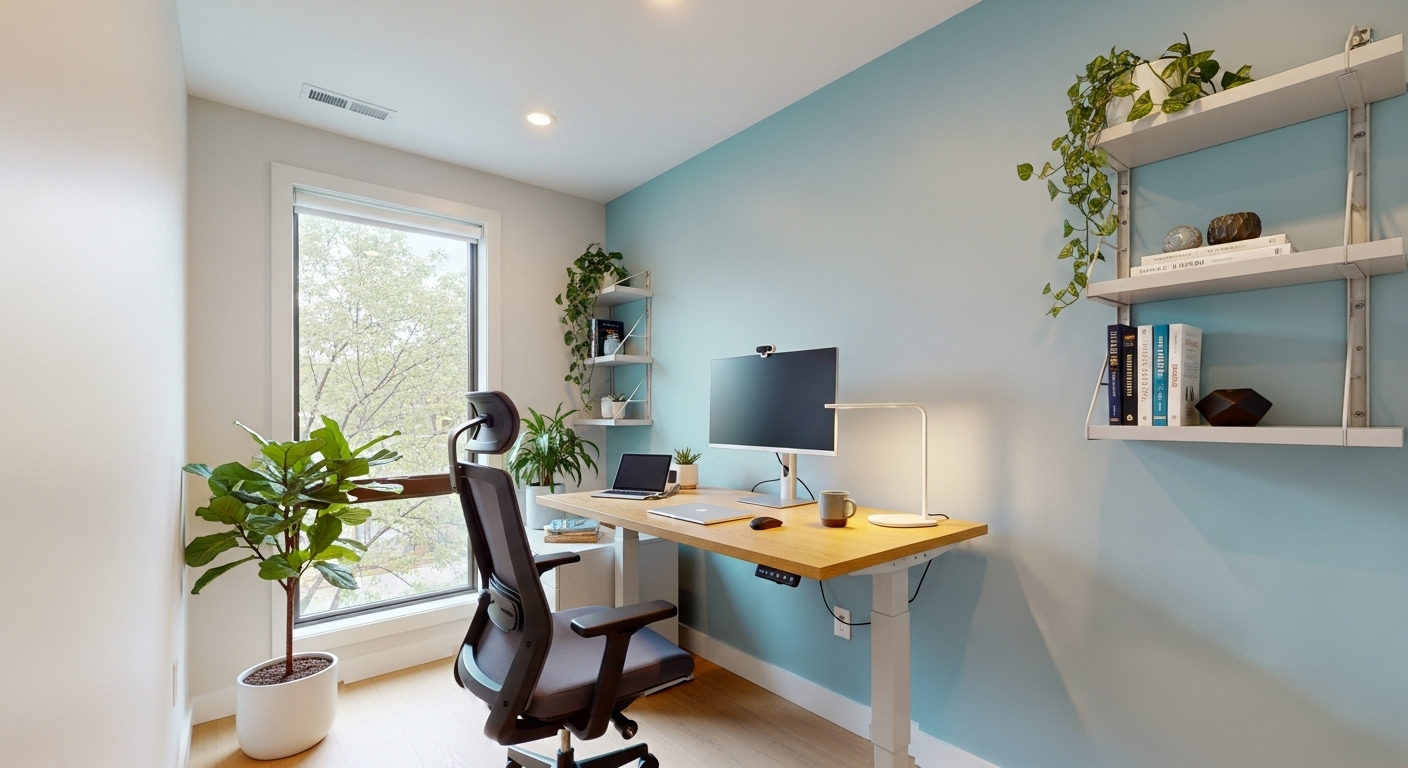The great remote work experiment has evolved. We’ve mastered the technology, configured our home offices, and adapted to a workflow mediated by screens and chat notifications. Yet, a subtle but significant challenge remains: replicating the informal, career-building interactions that once happened organically in physical office spaces. The spontaneous brainstorming sessions, the casual hallway chats, and the shared coffee breaks—the very fabric of the traditional ‘water cooler’—have vanished. For the modern professional, the key to not just surviving but thriving in remote work life lies in intentionally rebuilding this social infrastructure in a digital landscape. This guide moves beyond the basics of time management and dives into the nuanced arts of virtual communication, intentional culture-building, and proactive career management. We will explore how to master asynchronous collaboration, combat the visibility paradox to ensure your contributions are recognized, and forge genuine connections that fuel both personal well-being and professional advancement in a world where your office is wherever you choose it to be.
Mastering the Art of Asynchronous Communication
In a traditional office, presence often equated to productivity. A quick question could be answered by leaning over a cubicle wall. In a remote world, this synchronous-first mindset leads directly to burnout and notification fatigue. The true superpower of a distributed team is mastering asynchronous communication—a method that respects time zones, protects deep work, and promotes thoughtful interaction over immediate reaction. The goal isn’t just to send messages; it’s to communicate with such clarity and context that the recipient has everything they need to respond effectively without a follow-up call. This means abandoning clipped, one-line questions in favor of detailed messages that outline the project, the specific request, the deadline, and any relevant background information. It involves leveraging project management tools like Asana or Trello not just for task tracking, but as a central source of truth for project progress, eliminating the need for constant status update meetings. Leaders must model this behavior, resisting the urge to use chat for urgent requests and instead demonstrating patience and trust in their team’s ability to deliver. By embracing an asynchronous-first culture, teams reclaim hours of focus time, reduce cross-time-zone friction, and create a calmer, more productive work environment for everyone. It’s a fundamental shift from ‘being online’ to ‘being effective’.
Building Culture Without a Building
Company culture is often described as ‘what happens when the boss isn’t in the room.’ But what happens when there is no room? Without a shared physical space, culture can’t be left to chance; it must be deliberately and continuously constructed. The foundation of a strong remote culture is trust, which is built through consistent, transparent, and empathetic communication from leadership. However, the social fabric is woven through more than just work-related interactions. It’s crucial to create dedicated spaces for the informal connections that build camaraderie. This goes beyond the often-dreaded virtual happy hour. Consider creating dedicated Slack or Teams channels for non-work interests like #pets, #gardening, #book-club, or #cooking. These channels allow colleagues to connect as people, not just as job titles. Another powerful tool is a peer-to-peer recognition program, where employees can publicly acknowledge and celebrate each other’s contributions. This fosters a sense of appreciation and makes good work visible across the organization. Scheduled, non-mandatory ‘virtual coffee chats,’ where small groups are randomly paired for a 15-minute chat, can also be highly effective at breaking down silos and sparking the kind of spontaneous conversations that happen naturally in an office. The key is intentionality—designing rituals and routines that prioritize human connection and reinforce shared values, ensuring the company’s spirit thrives beyond the confines of any physical walls.
The Visibility Paradox: Combating Proximity Bias
One of the most significant anxieties for remote professionals is the ‘visibility paradox’: the fear that ‘out of sight, out of mind’ will negatively impact their career progression. Proximity bias is a real phenomenon where managers may unconsciously favor employees they see more often. To combat this, remote workers must shift from a passive to a proactive approach in demonstrating their value. This isn’t about being loud or constantly seeking attention; it’s about making your work and its impact impossible to ignore. The first step is meticulous documentation. Keep a ‘wins’ document tracking your projects, contributions, and positive feedback. This becomes an invaluable resource during performance reviews. Second, master the art of the update. Provide regular, concise, and outcome-focused summaries of your work to your manager and relevant stakeholders. Instead of saying ‘I worked on the report,’ say ‘I completed the Q3 performance report, which identified a 15% efficiency gain in our marketing spend.’ This frames your work in terms of its business impact. Proactively schedule regular one-on-one meetings with your manager and use that time not just for updates, but to discuss career goals, seek feedback, and align on future projects. Volunteering for cross-functional initiatives or offering to mentor new hires are also excellent ways to increase your visibility and demonstrate leadership potential across the organization.
Forging Genuine Connections from a Distance
While structured communication is vital for productivity, the strongest teams are built on a foundation of genuine human connection. In a remote setting, these relationships don’t happen by accident. They require a conscious effort to see colleagues as multi-dimensional people. One of the simplest yet most effective strategies is to dedicate the first five minutes of team meetings to non-work chatter. Ask about weekends, hobbies, or a recent movie someone watched. This small ritual acts as a ‘digital commute,’ allowing people to transition into work mode and connect on a personal level before diving into agendas. Leveraging video is also critical. While not every call needs to be on camera, using video for one-on-ones, brainstorming sessions, and team check-ins helps capture the non-verbal cues that build trust and rapport. Be an active listener in digital conversations; show you’re engaged by nodding, asking follow-up questions, and summarizing what you’ve heard. Don’t underestimate the power of a simple, direct message to a colleague just to check in, share an interesting article, or say thank you for their help on a project. These small, intentional acts of connection are the digital equivalent of a friendly chat in the breakroom. They build social capital and transform a group of individuals working in isolation into a cohesive, supportive team.
Digital Wellness: Drawing the Line Between Work and Life
When your home is your office, the line between work and personal life can blur to the point of non-existence, paving the way for chronic stress and burnout. Establishing and protecting boundaries is not a luxury; it’s a prerequisite for sustainable remote work. The first step is to create clear start and end-of-day rituals. This ‘digital commute’ can be as simple as a 15-minute walk before you log on, or reading a chapter of a book after you log off. These actions signal to your brain that the workday has officially begun or ended. Aggressively manage your notifications. Turn off all non-essential alerts, use ‘focus mode’ features on your devices, and communicate your working hours clearly in your chat status and calendar. It’s crucial to signal your availability without feeling pressured to be ‘always on.’ Scheduling breaks into your calendar, including a proper lunch break away from your desk, is non-negotiable. Use this time to stretch, get some fresh air, or do something completely unrelated to work.
A 2022 study by Microsoft highlighted that a significant portion of remote workers feel obligated to respond to after-hours messages, leading to what they term ‘digital presenteeism.’
This underscores the importance of setting expectations at both an individual and team level. A healthy remote culture is one where logging off is not just accepted but encouraged.
The Remote Career Ladder: Charting Your Path to Promotion
Advancing your career in a remote environment requires a strategic approach that combines skill development with savvy internal networking. The skills that lead to promotion in a remote-first world often differ from those in a traditional office. Exceptional written communication, robust self-management, and adept project management become even more critical. Proactively identify these skills and seek opportunities to develop them, whether through online courses, certifications, or taking the lead on a complex project. Career development must be an explicit conversation. In your one-on-one meetings with your manager, don’t wait to be asked about your ambitions. Come prepared to discuss your long-term goals and ask directly, ‘What skills and experiences do I need to gain to be considered for the next level?’ This demonstrates initiative and allows your manager to become an active partner in your growth. Networking also needs a new approach. Identify key people in other departments and request a 20-minute virtual coffee chat to learn more about their work and how your roles intersect. This builds your internal network and gives you a broader understanding of the business. Ultimately, your career path is your responsibility. By combining high-impact work, clear communication of that impact, and strategic relationship-building, you can ensure your career trajectory continues to climb, no matter where your desk is located.
The transition to remote work is more than a logistical shift; it’s a cultural and professional evolution. Thriving in this new landscape means moving beyond the technical setup and mastering the human element. The ‘virtual water cooler’ is not a single tool or platform, but a mindset—a commitment to intentional communication, deliberate culture-building, and proactive career ownership. By mastering the art of asynchronous collaboration, you protect your focus and respect your colleagues’ time. By consciously forging genuine connections and contributing to a positive team culture, you create a supportive and engaging work environment. Simultaneously, by making your contributions visible and strategically planning your growth, you can dismantle proximity bias and build a rewarding career path. The modern professional who embraces these principles doesn’t just adapt to remote work; they leverage it to achieve a more balanced, productive, and fulfilling career. The future of work is flexible, and by mastering these unwritten rules, you can place yourself firmly at the forefront of it.





